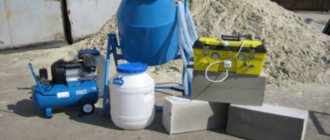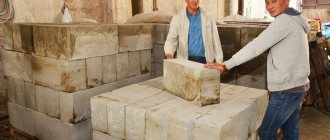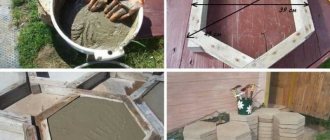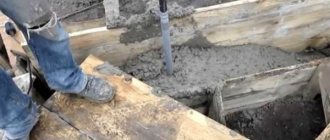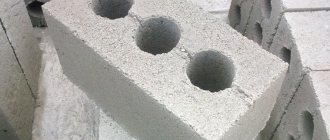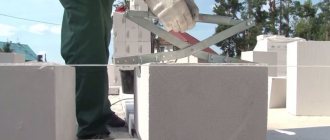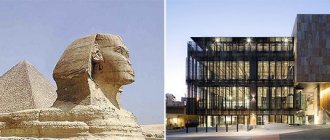Marble, which has excellent decorative properties, has always been valued in construction. But due to the high cost of the material, not everyone can afford to use it to decorate premises. Therefore, an artificial material imitating stone was developed as an alternative. It was called artificial marble.
Description and types of material
Artificial marble is a decorative and building material that quite accurately imitates natural stone. It is widely used in construction, renovation and industrial applications.
For its production, both mineral components and synthetic resins and other additives are used. Due to the special method of introducing dyes, the surface of the finished product has a characteristic pattern with marble stains and specks.
Artificial marble has many positive characteristics:
- high mechanical strength;
- durability, long period of operation;
- low thermal and electrical conductivity;
- fire safety;
- environmental friendliness, harmlessness;
- resistance to acids, alkalis, fats, moisture;
- aesthetic appearance;
- hardness, ease of processing.
Depending on the production method, artificial marble can be cast, cast, ground or liquid.
Liteva
This composite material is the most popular, since the injection molding method is applicable even at home. The basis of artificial marble is a mineral filler (quartz sand or stone chips) and polyester resin. In industry, plasticizers and other targeted additives are also added to the composition.
Oselkovy
The material is a marble-painted gypsum mass, which is diluted with an adhesive solution. Substances that slow down the setting of gypsum must be added to the composition. Due to grinding and polishing, products made from ashlar marble have a beautiful shine. They turn out durable and lightweight.
Oselok marble slabs
Important! Products made from oselkov marble do not tolerate high humidity.
Ground (microcalcite)
Crushed (ground) marble is a white, grayish powdery material obtained by grinding marble chips. It is used for the production of paints and varnishes, linoleum, and various types of plastic. Finished products are durable and resistant to UV radiation, but their moisture resistance is quite low.
Liquid
The material is produced by combining marble chips and acrylic polymers. It is lightweight, flexible, completely non-toxic and environmentally friendly. Due to their small thickness, sheets of liquid artificial marble can be cut with scissors and used instead of wallpaper. The surface will be smooth, seamless and durable.
All about marble countertops for the kitchen: pros and cons
A luxurious element of the interior, a stylish item for decades, the pride of the home - all these beautiful epithets apply to a marble countertop. There are many reasons for such flattering reviews. Natural marble is a durable and strong, 100% natural material, and it is natural products that bring harmony to the home.
Marble is formed from sedimentary rocks of organic origin. Limestone, under the influence of certain physicochemical conditions, crystallizes, forming compounds of calcite and dolomite. Translated from Latin, “marble” means “shiny stone.”
Production of cast artificial marble
Before starting work, you need to immediately prepare all materials and consumables, as well as buy or rent tools and equipment for marble production.
Equipment
First of all, you need matrices - forms for pouring the marble mixture. Polyurethane molds have proven themselves best - they are very durable and do not deform, although they are not cheap.
Table top mold
You will also need:
- components for mixing the composition;
- construction mixer;
- Sander;
- capacity;
- gelcoat sprayer or mold brushes.
Composition of raw materials
The main components are polyester resin (gelcoat) and marble chips (flour) in a 4:1 ratio. Cement, gypsum, lime, and quartz sand are also used to improve strength and improve performance characteristics.
Important! If desired, cement can completely replace the polyester resin in the composition, but the reliability of the finished marble will decrease.
In this case, the “recipe” for the solution will be as follows:
- sand – 2 parts;
- cement – 1 part;
- small stone chips – 25% of the total volume;
- water – 0.2 parts;
- plasticizer – 1% by weight of cement;
- pigment – 1% by weight of cement.
Manufacturing of marble countertops
Marble is a medium-hard and soft stone. Its structure can be coarse-grained, medium-grained and fine-grained with a grain size of more than 1 mm, from 1 mm to 0.25 and less than 0.25 mm. There are several options for the marble surface - polished, honed and aged .
Slabs of medium-hard stone are processed according to the following scheme: cutting - edging - grinding; from soft stone: cut - edging. The color palette of natural marble is varied and includes many varieties .
White marble
Deep and pure white color is inherent only in marble ; it is not found in any other stone species. There are varieties with barely noticeable yellowish or grayish veins. A white marble countertop will visually expand the room and add a feeling of light and cleanliness.
To prevent the surface from yellowing over time, manufacturers offer various compositions for care and polishing. These products create a thin invisible film that protects against dirt and oxidation.
Production technology
The method of producing artificial marble is simple, it is only important to follow the specified recommendations.
Preparation of the solution
Pour the dry ingredients into a clean container, mix them thoroughly with a mixer and add the dye. The latter is mixed in carefully to maintain the uneven color of the finished material.
Then the mass is diluted with water, shaken well or placed on a vibrating table - this will help get rid of air bubbles. Water is introduced in 2 steps: first, 80% of the liquid is added, then the plasticizer is added, and then the remaining water.
Preparation and filling of forms
The molds are placed in a strictly horizontal position, sprayed with gelcoat (polyester resin), and the solution is poured. Shake to get rid of excess air and leave to harden for at least a day under the film.
Advice! To enhance the strength of marble, reinforcement is made - a wire mesh is placed in the thickness of the solution.
Processing of finished slabs
After curing, the molds are turned over, the stone slabs are taken out and sanding begins. Such products can only be cut with equipment equipped with diamond blades.
Reviews of cast marble
Of course, there are different materials on the market, but in the best examples, artificial stones even surpass the characteristics of natural analogues in some respects. Owners of furniture pieces, for example, note unique color and texture solutions. Over time, the texture on surfaces does not fade even under unfavorable operating conditions. The technical and physical advantages that cast marble has are also noted. Reviews, for example, emphasize the resistance of structures to destruction processes under the influence of external factors. Most of this marble allows direct contact with water, so it can be used both in the bathroom and outdoors. In both cases, owners do not note any harmful effects on the characteristics of the material.
Use and care instructions
Artificial marble is often used for decorating rooms and wall cladding. It makes beautiful tabletops, window sills, stairs, sculptures, and decorative fountains. The material is suitable for finishing house facades, emphasizing window and door openings, and creating paving slabs.
Artificial marble should be cleaned with a soft cloth, as hard brushes can leave scratches on it. It is washed using liquid SMS and does not use drying oil-based products for polishing. Otherwise, the material is considered quite unpretentious and, with the right approach, will last for many years.
What is cast marble?
This is a material that is created on a polymer base with the inclusion of fillers. The production technology itself implies wide possibilities for changing the aesthetic properties of a given stone. Compared to natural marble, the composite analogue makes it possible to use any color shades, without being limited by the size of the product. It is also worth noting the difference from the classical technology for the production of artificial stones. Unlike materials created using cement, cast marble involves the use of polymers as a binding additive. It is thanks to this technological feature that high performance properties are achieved. Among them are: solidity, moisture resistance, optimal thermal conductivity, etc.
Technology for making marble from gypsum
The technology for manufacturing artificial marble from gypsum is simple and accessible
This technology is popular and consists of several stages:
- Preparation of working solution. To do this, put dry plaster into a container and add water, wood glue and resin, previously melted in a hot bath. After thorough mixing, pigments or acrylic dyes are poured into the mass and stirred again until veins form.
White artificial marble can be obtained by adding to the solution a mixture of 200 g of white humilax, 50 g of dry gypsum and 1 liter of industrial alcohol. Brown is formed by mixing orange humilax, and black is formed by aniline dye.
- Placing the finished mass into the mold. Excess water is easily removed with dry plaster, which is sprinkled on top. The hardening process of the finished product can take 8-10 hours, after which it can be removed.
- To form a waterproof layer on top of gypsum marble, its front surface is treated with potassium silicate and polished with soft felt.
How to get ready-made marble or “marble concrete”
Scheme for preparing a concrete mixture.
The mass poured into the mold will harden for about ten days. You should not interfere with the process, as is done when performing some other work with cement. For example, there will be no need to regularly moisten the surface: the solution will be covered with plastic film, a material that will prevent liquid from escaping too quickly from the thickness of the concrete mass. After the slab has completely hardened, it must be lifted, turned over, and then the form removed from it, like a cover.
To increase the strength of concrete, you can additionally reinforce it with wire. To do this, it is sunk into molds after the cement-sand mixture has been poured into them. The solidification of the contents of the forms must be complete.
One should not think that in order to obtain high-quality concrete, the technology must be particularly complex.
In fact, all the necessary actions can be performed in a city apartment.
The output is a material with low porosity, resistant to household chemicals, and moisture resistant. If necessary, the slab can be polished: to do this, its surface will need to be treated alternately with alcohol, a transparent polish, and then again with alcohol. Alcohol should be used only after the layer of polish has dried, but it does not need to be dried.
How to make marble from polyester resins
Artificial marble made from polyester resins is incredibly durable
In this way, you can obtain cast marble with a unique texture, which, moreover, will be incredibly resistant to mechanical and chemical damage. To do this, it is necessary to prepare polymer concrete from polyester resin and filler, mixing them in a ratio of 25:75. The latter would be quartz sand or another mineral crushed into crumbs.
You can replace polyester resin with a mixture of butacryl and AST-T (technical acrylate), taken in equal quantities. The same amount of quartz sand or crushed stone and acrylic-based pigments are added to them.
The resulting composition is laid out in a mold, where it is left until completely hardened. You can increase its strength using chipboard boards. Its dimensions should be 5 cm smaller than the dimensions of the mold. By pressing into the mass, it subsequently improves the technical characteristics of the finished product. After hardening and hardening, the latter is removed from the mold and sanded.
Preparatory work
Molds for making artificial marble can be either purchased or made yourself
The easiest way to make artificial marble is from cement and sand. If the technology is followed, in this case the products retain all their properties. The main thing is not to make slabs that are too thin or thick. The former turn out to be fragile, while the latter are heavy.
To make artificial marble you will need:
- fine sand;
- cement grade 500;
- plasticizer S-3 (it improves the technical characteristics of concrete);
- pigment - an inorganic dye that does not dissolve in water, for example, oil paint;
- filler - quartz sand, marble chips, dolomite, limestone or pebbles;
- polyethylene film;
- water.
To work, you need to prepare in advance:
- container for preparing the solution;
- construction mixer with an attachment or a hammer drill with a mixing attachment;
- polymer form - you can purchase it or make it yourself from polyurethane, gypsum or plastic. They can be replaced with a wooden frame with glass placed at the bottom;
When choosing a mold, it is important to ensure that its surface is even and smooth, and that it itself is detachable. In this case, you can easily get the finished product.
- vibrating table - it is indispensable in the production of artificial marble in large quantities. Regardless of the type of vibration - horizontal or vertical, it helps remove air bubbles from the solution and compact it. In the absence of such a design, you can simply shake the form vigorously constantly;
- brushes for greasing the mold;
- gelcoat sprayer;
- grinding machine with diamond disc cups for processing the finished slab.
